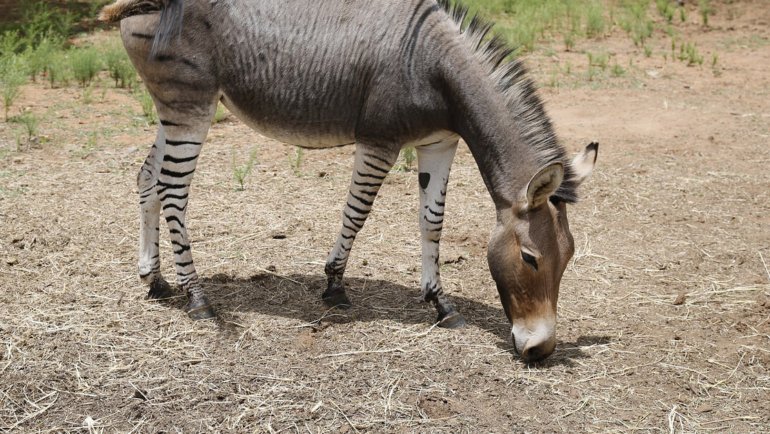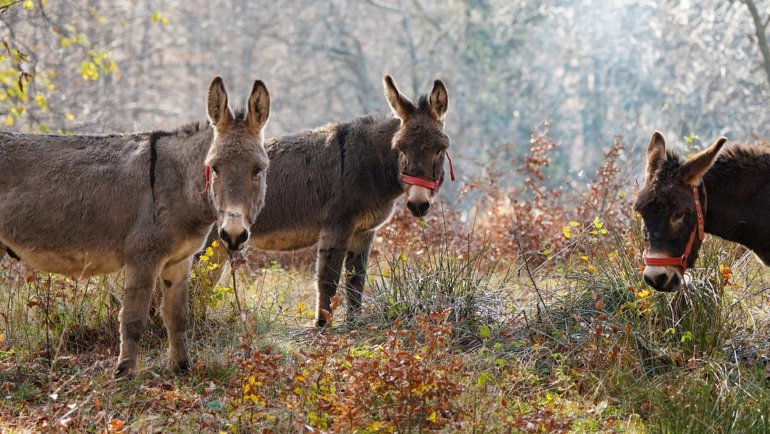The Amur leopard is a stunning creature, clad in a coat of spot-speckled fur, and shrouded in an aura of stealth and solitary mystery.
Despite its striking beauty, this particular leopard subspecies is teetering on the brink of extinction. This article will shed light on the Amur leopard’s lifestyle, behaviors, and the perils they face, in addition to the efforts undertaken to ensure their survival for generations to come.
The Amur Leopard at a Glance
Classification
| Kingdom: | Animalia |
| Phylum: | Chordata |
| Class: | Mammalia (Mammals) |
| Order: | Carnivora |
| Family: | Felidae |
| Genus: | Panthera |
| Species: | P. pardus |
| Subspecies: | P. p. orientalis |
Essential Information
| Average Size: | 42 to 54 inches (107 to 137 cm) body length, with an added tail length of 32 to 35 inches (81 to 89 cm) |
| Average Weight: | Males 70 – 105 lbs (32 – 48 kg), Females 55 – 94 lbs (25 – 43 kg) |
| Average Lifespan: | 10-15 years in the wild, up to 20 years in captivity |
| Geographical Range: | Primarily in the Amur River basin of eastern Russia, with a few found in China and North Korea. |
| Conservation Status: | Critically Endangered (IUCN Red List) |
Species and Subspecies
The Amur leopard, also known as the Far Eastern leopard, is a subspecies of the leopard (Panthera pardus). It’s one of several leopard subspecies that are adapted to different habitats across the globe. While all leopards share a similar basic body structure and behavior, they differ in terms of size, coat color, and spot patterns depending on their environment.
The Amur leopard is distinct for its thick coat, which is pale cream-colored in winter to better blend in with the snow, and a more vivid, reddish or orange color in the summer. The rosettes (spots) are widely spaced and larger than those seen on other leopard subspecies.
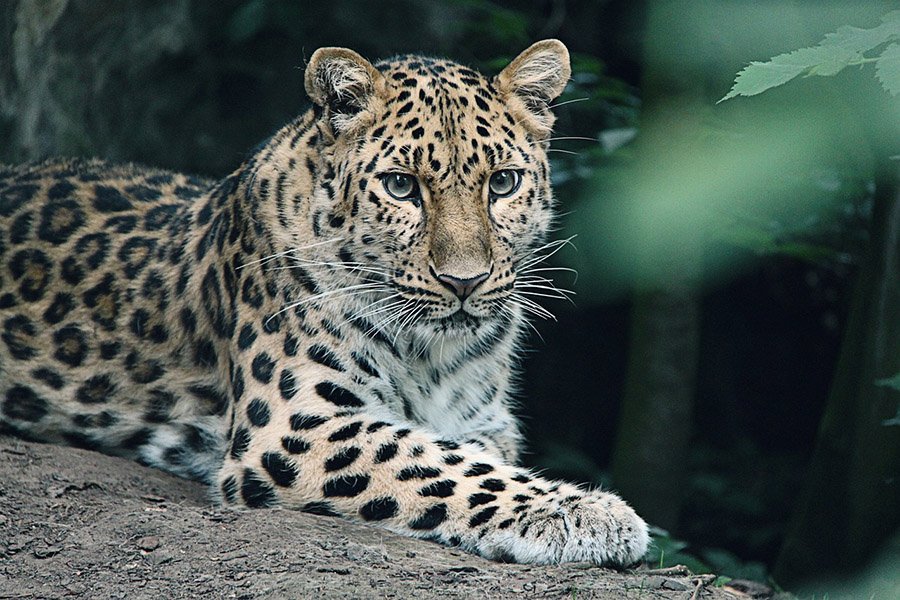
Description
Amur leopards are medium-sized big cats with a strong and agile body. They generally measure 42 to 54 inches in body length (107 to 137 cm), with an added tail length of 32 to 35 inches (81 to 89 cm). Male Amur leopards are larger, averaging between 70 – 105 lbs (32 – 48 kg), while females are slightly smaller, ranging from 55 – 94 lbs (25 – 43 kg).
This subspecies features a thick coat that changes with the seasons. In the winter, the fur can grow up to 3 inches (7.5 cm) long to insulate against the cold. The coat’s color and pattern offer perfect camouflage, with large, widely spaced rosettes that include thick, unbroken rings and darkened centers.
In terms of sexual dimorphism, males are larger and heavier than females, which is common in many big cat species. However, apart from size, there are no significant differences in appearance between the sexes.
Habitat and Distribution
The Amur leopard’s geographical range is primarily limited to the Amur River basin in the Russian Far East. There are also small populations in the border areas of China and possibly in North Korea. Historically, they were found throughout northeastern (“Manchurian”) China and the Korean Peninsula, but due to habitat loss, poaching, and other factors, their current range is drastically reduced.
Their habitat includes temperate, broadleaf, and mixed forests which provide plenty of cover and an abundance of prey. The harsh climate in the area creates a unique environment for these leopards, with temperatures dipping as low as -30°C (-22°F) in winter and reaching up to 35°C (95°F) in summer.
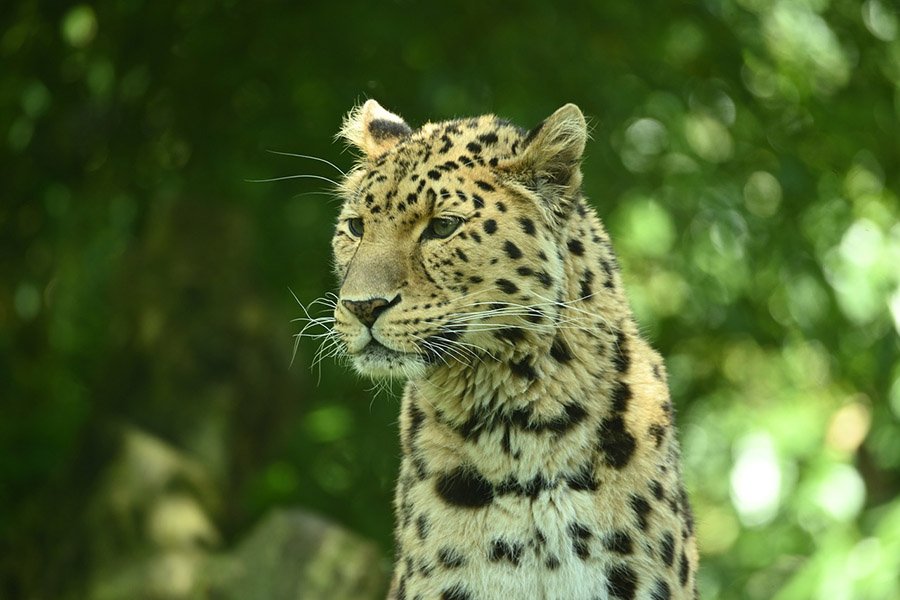
Behavior
Like most big cats, Amur leopards are solitary animals and are also largely nocturnal, although they have been known to be active at dusk and dawn (crepuscular) and sometimes during the day. They mark their territories with scent markings and by leaving scratch marks on trees.
While typically silent, Amur leopards communicate through a variety of vocalizations such as growls, roars, and purrs. Visual cues also play a role in communication, especially during the breeding season.
Diet and Hunting/Feeding Behavior
Amur leopards are carnivores, feeding mainly on roe deer, sika deer, and wild boar, though they’re adaptable and can eat a wide variety of smaller prey like hares and raccoon dogs when larger prey is scarce.
As apex predators, they’re accomplished stalk-and-ambush hunters. They rely on stealth, getting as close as possible to their prey before launching a swift and powerful attack.
They’re capable of running at speeds of up to 37 miles per hour (60 km/h) and have been known to leap more than 19 feet (6 meters) horizontally and up to 10 feet (3 meters) vertically.
Predators
Fully grown Amur leopards, like most big cats, have few natural predators. However, they can occasionally fall prey to tigers, which share part of their range. Humans pose the greatest threat to Amur leopards through poaching, primarily for their beautiful fur, and habitat destruction.
Young cubs are more vulnerable and can be targeted by large birds of prey, wolves, or even male leopards. The mother leopard conceals her cubs in dense vegetation to protect them from potential threats.
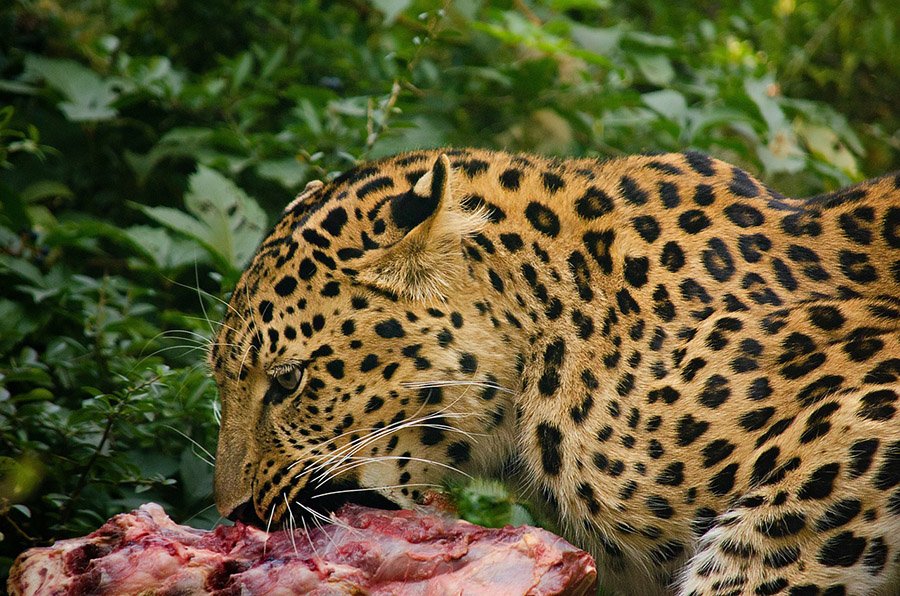
Reproduction and Life Cycle
Amur leopards reach sexual maturity around the age of 2-3 years. The breeding season typically takes place between January and February. After a gestation period of approximately 90-105 days, a female gives birth to a litter of 1-4 cubs, with 2 being the most common.
The cubs are born blind and helpless, completely dependent on their mother for food and protection. They start venturing out of their den at around two months old and will start to learn hunting skills from their mother.
By the age of 1.5 to 2 years, the young leopards will have fully mastered their hunting skills and will set off to establish their own territories.
Conservation and Threats
The Amur leopard is classified as Critically Endangered by the International Union for Conservation of Nature (IUCN). The primary threats facing this species are poaching for its fur, depletion of its prey base due to illegal hunting, and habitat loss due to logging, road construction, and human settlement.
In order to protect and increase the population of this critically endangered species, various conservation efforts are being made. This includes anti-poaching campaigns, monitoring individuals in the wild, habitat restoration, and establishing protected areas.
A noteworthy project is the establishment of the Land of the Leopard National Park in Russia, which covers about 60% of the Amur leopard’s habitat.
Also, there are breeding programs in zoos around the world aiming to maintain a genetically diverse population, which can potentially help in future reintroduction programs.
Fun Facts
- The Amur leopard can run at speeds of up to 37 miles per hour (60 kilometers per hour) making it one of the fastest big cats!
- This animal has an impressive jumping ability. It can leap more than 19 feet (6 meters) horizontally and up to 10 feet (3 meters) vertically.
- Unlike many big cats, Amur leopards are quite adapted to cold weather and their fur changes with the seasons. In the winter, the fur can be up to 7 centimeters long, and in the summer it shortens to about 2.5 centimeters.
- The Amur leopard has a unique “rosette” pattern on its fur that differs from individual to individual, making it possible for researchers to identify specific animals in the wild.
- It’s estimated that there are only around 100 Amur leopards left in the wild, making it one of the rarest cats on the planet!
Frequently Asked Questions
Why are Amur leopards so rare?
The main reasons for the decline in Amur leopard populations are habitat destruction, poaching for their beautiful fur, and depletion of their prey due to illegal hunting.
Are Amur leopards dangerous to humans?
While any large predator can pose a threat if cornered or if humans come too close, Amur leopards are generally elusive and try to avoid human contact.
How big is the territory of an Amur leopard?
Males typically have a territory of up to 120 square miles (310 square kilometers), while females occupy smaller ranges of around 18-42 square miles (47-110 square kilometers).
What efforts are being made to save the Amur leopard?
Conservation efforts include anti-poaching measures, habitat restoration, and breeding programs. A significant stride was the establishment of the Land of the Leopard National Park in Russia.
Can Amur leopards swim?
Yes, like many big cats, Amur leopards are quite capable swimmers, although they don’t typically spend much time in water.

